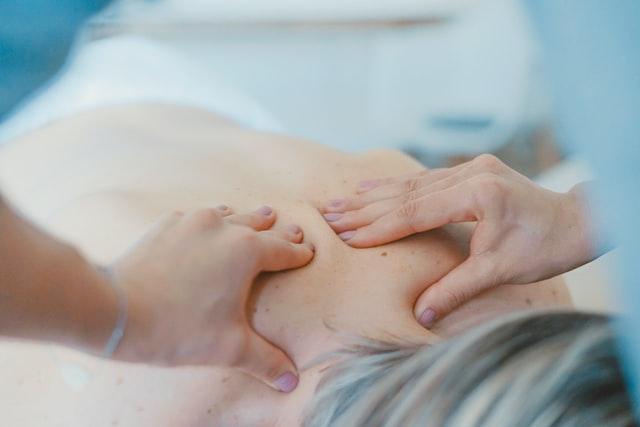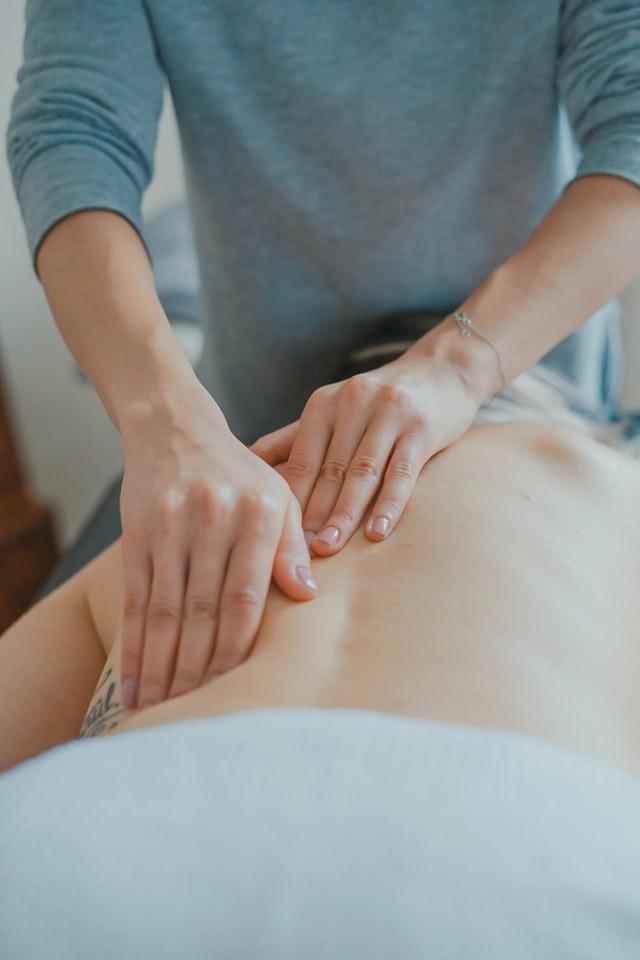Lymphedema Physical Therapy
Lymphedema Physical Therapy

Contact Us
Lymphedema is a chronic disease that can pose a heavy burden on patients. Not only does lymphedema decrease mobility and our ability to perform daily tasks but it also has a negative social impact on affected individuals.
Physical therapists are aware of the ways in which lymphedema can affect daily life and they are there to develop sensible training sessions that reduce the volume of lymphedema and teach patients how to manage everyday tasks. Most importantly, lymphedema physical therapy aims to improve a patient’s quality of life and encourage them to regain their independence.
What Is Lymphedema Physical Therapy?
Lymphedema physical therapy is a form of treatment that reduces swelling and controls lymphedema. This treatment program includes manual lymphatic drainage, exercises, and massages.
Complete Decongestive Therapy (CDT) is at the center of lymphedema physical therapy. This is an intense program that stimulates the lymphatic system. CDT includes different treatment approaches including bandaging, compression garments, exercise, pneumatic pumps, and decongestive exercises.
It consists of two main phases – Reductive CDT and Maintenance CDT. The first phase aims to decrease the proliferated connective tissue. The program is tailored to individual needs, but usually, patients need to visit the therapists 5 times a week while they’re in the reductive phase.
This may sound too intense, but Reductive CDT includes sessions such as manual lymphatic drainage, exercises, and bandaging, which are vital for the reduction of limb volume.
In the second phase, patients learn exercises and how to apply the bandages correctly on their own. The Maintenance phase aims to sustain the results from the first phase and keep swelling at a low level. Maintenance CDT includes exercises, self manual lymphatic drainage, and wearing compression sleeves and garments. This phase can last for months or years.
Patients learn how to take care of their skin and how to protect themselves from situations that can cause lymphedema flare-ups. Additionally, patients learn how to keep their skin clean and moisturized so they can prevent further infections.
How Does Women’s Health Physical Therapy Help Patients?

Women’s health physical therapy helps patients manage and control lymphedema.
Through the program sessions, patients learn helpful exercises, coping strategies, and self-care practices that can drastically improve the quality of their lives. Therapists work closely with patients so they can develop a proper treatment plan that fits the patient’s needs.
Women’s health physical therapy addresses the swelling and aims to decrease the proliferated connective tissue. It provides patients with constant attention and teaches them how to prevent further lymphedema flare-ups.
Additionally, patients gain psychological support and go through self-care management and training sessions so they can regain control over their daily life.
Contact Us
How Long Is Physical Therapy for Lymphedema?
The length of the treatment depends on the severity of the lymphedema and how the body responds to the treatment. The active phase can last a couple of weeks and patients usually need to visit the therapist four or five times a week until the amount of swelling is reduced. The second phase can last a couple of months or years. It all depends on the severity of the symptoms.
Keep in mind that lymphedema is a dynamic condition that constantly changes. Some patients experience occasional flare-ups and visit physical therapists for periodic treatments, while others can have persistent symptoms that require constant treatment. Every patient is different, so lymphedema physical therapy programs are tailored to the patient’s needs.
Conditions Lymphedema Physical Therapy Can Help

Lymphedema physical therapy addresses swelling that occurs in the arms, legs, and breasts and improves lymphedema symptoms such as aching, discomfort, and pain.
Contact Us
Lymphedema Physical Therapy for Breast
Around one-half of women who undergo breast surgery with axillary node removal will experience breast lymphedema. Symptoms include edema (buildup of excess fluid), erythema, and a low level of distress. Patients that have been treated for breast cancer usually develop lymphedema in the arms and hands, but lymphedema can also affect the breasts, back, chest, and underarms. Other symptoms include heaviness, puffiness, and decreased flexibility in the arms, hands, or fingers.
The physical treatment for breast lymphedema aims to restore mobility and improve comfort in the area around the breast. Patients that are to undergo breast cancer surgery can talk with physical therapists to educate themselves on lymphedema and the different ways of lymphedema prevention. Additionally, physical therapists can recommend preventative sleeves and provide patients with a home exercise program for the post-surgery period.
Lymphedema Physical Therapy for Arm
During breast cancer surgery, the lymphatic vessels are traumatized and this causes extra fluid to build-up in the hands, which causes many women who’ve had this type of surgery to struggle with arm lymphedema.
Therapists offer patients with arm lymphedema exercises that stimulate the lymphatic vessels. They initiate muscle contractions, move lymph fluid out of the limb and into the blood circulation. Once the excess fluid moves back into circulation, swelling in the arm should be reduced.
Lymphedema Physical Therapy for Leg
Leg lymphedema is the most common type of lymphedema. The main symptoms are reduced mobility, discomfort, and hardening of the skin. Most programs for treating leg lymphedema include personalized exercises and light massages that stimulate the flow of liquid lymph.
The therapists monitor the size of the limb and teach patients how to take care of their skin and perform the exercises by themselves. They also find proper compression garments for the patient and instruct them how to use the garment by themselves. Additionally, therapists recommend a proper diet to patients that can decrease the fluid buildup in tissues and prevent future flare-ups.
If you have further questions regarding lymphedema, please don’t hesitate to contact our team at Lake City Physical Therapy.

